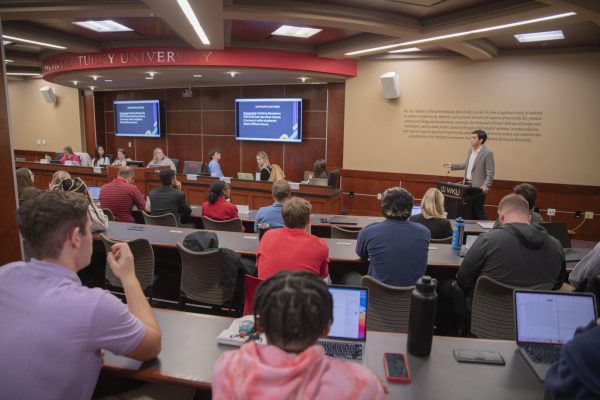WKU’s fall enrollment tops 21,000
October 31, 2011
Enrollment at WKU continues to climb, reaching more than 21,000 students and setting a new record for the 14th year in a row.
According to a WKU news release, fall 2011 enrollment is 21,048 students, an increase of 145 students from last fall.
President Gary Ransdell said the announcement that WKU had exceeded 21,000 students was not a surprise because the university monitors the figures closely.
Brian Meredith, associate vice president for Enrollment Management, said the growth is due to a variety of factors and programs.
The Navitas program, which aims to bring international students to WKU, is now in its third year, has seen the number of students at WKU triple since the first year, Meredith said.
Improving retention numbers from sophomore to junior year and junior to senior year have also helped, he said.
Ransdell also emphasized the importance of retention and increasing the number of students who return for their sophomore year of college.
Currently, WKU loses about 25 percent of the freshman class before their sophomore year, Ransdell said.
“We want to cut way into that number,” he said.
Ransdell said he hopes to retain several hundred more freshmen from each freshman class.
Additionally, WKU has built new relationships with high schools in the region, increasing the number of students enrolled in dual credit classes, Meredith said.
Dual credit classes allow high school students to take WKU classes and simultaneously receive credit for the course at their high school and WKU.
A good many of these dual-credit students go on to become WKU full-time freshmen after high school, Meredith said.
WKU’s continuing efforts to reach out to area students, the growth of academic programs and increased awareness of WKU’s offerings has also contributed to growth, Meredith said.
“As word of mouth grows, more interest in Western Kentucky grows,” he said.
The 145-student increase is considered modest growth, Ransdell said. Sustaining this level of growth is important for supporting the university financially.
However, the financial impact of this year’s growth is relatively flat because the student increase came from dual credit. Ransdell said dual credit students pay a flat $200 fee for each course.
“If that’s your primary margin of growth, it doesn’t produce the kind of revenue from online students and full-time students,” he said.













![Students cheer for Senator at Large Jaden Marshall after being announced as the Intercultural Student Engagement Center Senator for the 24th Senate on Wednesday, April 17 in the Senate Chamber in DSU. Ive done everything in my power, Ive said it 100 times, to be for the students, Marshall said. So, not only to win, but to hear that reaction for me by the other students is just something that shows people actually care about me [and] really support me.](https://wkuherald.com/wp-content/uploads/2024/04/jadenmarshall-1200x844.jpg)


![Students cheer for Senator at Large Jaden Marshall after being announced as the Intercultural Student Engagement Center Senator for the 24th Senate on Wednesday, April 17 in the Senate Chamber in DSU. Ive done everything in my power, Ive said it 100 times, to be for the students, Marshall said. So, not only to win, but to hear that reaction for me by the other students is just something that shows people actually care about me [and] really support me.](https://wkuherald.com/wp-content/uploads/2024/04/jadenmarshall-600x422.jpg)








